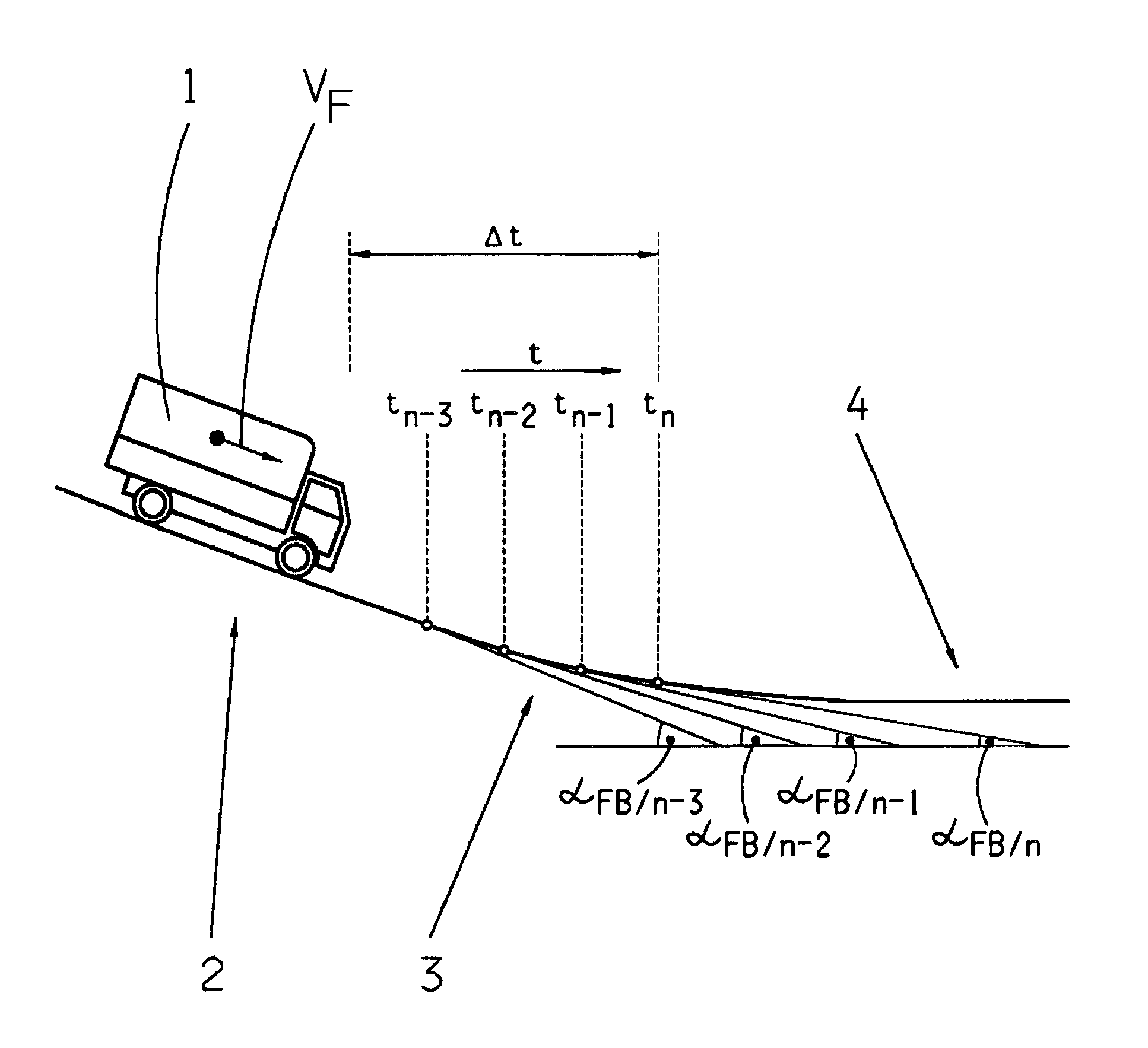Method for controlling an automatic multi-step shift transmission
a transmission and multi-step technology, applied in the direction of digital data processing details, mechanical equipment, instruments, etc., can solve the disadvantages of motor noise when moving off the slope, unnecessarily high fuel consumption, and only insufficient driving force of the motor vehicle, so as to achieve less noise and reduce fuel consumption
- Summary
- Abstract
- Description
- Claims
- Application Information
AI Technical Summary
Benefits of technology
Problems solved by technology
Method used
Image
Examples
Embodiment Construction
[0024]In the schematic representation of the sole FIGURE a motor vehicle 1 is driving on a downhill stretch 2 at a speed vF, so that the drive motor is in thrust operation and a retarder, if present, is engaged. At the latest after driving onto the downhill stretch 2 and / or after the transition to thrust operation, a recognition function for determining a downhill run-out 3 between the current downhill stretch 2 and a subsequent stretch of level ground 4 is initiated in an electronic control unit.
[0025]Within the recognition function, in a set time cycle ti, ti+1, ti+2, . . . the respective current road gradients αFB / i, αFB / i+1, αFB / i+2, . . . , i.e. the downhill or uphill gradients of the road are determined. If then, at a specified number of consecutive and immediately previous time points, in this case for example four time points tn−3, tn−2, tn−1, tn, the road gradient αFB / i determined has been decreasing monotonically in its absolute numerical value, i.e. |αFB / n|FB / n−1|FB / n−2|F...
PUM
 Login to View More
Login to View More Abstract
Description
Claims
Application Information
 Login to View More
Login to View More - R&D
- Intellectual Property
- Life Sciences
- Materials
- Tech Scout
- Unparalleled Data Quality
- Higher Quality Content
- 60% Fewer Hallucinations
Browse by: Latest US Patents, China's latest patents, Technical Efficacy Thesaurus, Application Domain, Technology Topic, Popular Technical Reports.
© 2025 PatSnap. All rights reserved.Legal|Privacy policy|Modern Slavery Act Transparency Statement|Sitemap|About US| Contact US: help@patsnap.com


